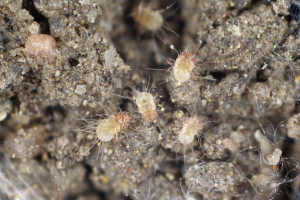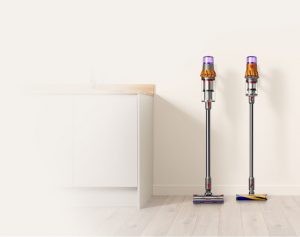
- Dust mites are everywhere in your home, including your child’s stuffed toys.
- Exposure to dust mites can lead to asthma attacks and eczema for those with severe allergies.
- It’s impossible to completely remove dust mites from your home, but you can minimize the population.
Imagine coming across an adorable teddy bear at the mall, knowing your child will be so ecstatic with the thoughtful gift. Fast forward a week later, your child has been carrying the stuffed toy around like it’s their shadow. Bringing the teddy to the dining table and safely tucking it in for bed.
As more time is spent between your child and their cuddly bear, you notice your child’s asthma has been getting worse. With the sudden sour note on a happy memory, you realize that the teddy bear just might be as deadly as a real, live bear.
Teddy bears, as it turns out, collect dust, and inevitably, dust mites. Now you’re torn on whether or not you would have to break the sweet bond between your child and their companion.
Tough decision, isn’t it?
Moms and dads, you definitely do not have to treat the innocent teddy bear like the plague. But it might do your family good to get as much information as you can about dust mites.
Keep reading for everything you need to know about dust mites, the symptoms to watch out for, and 4 effective ways to remove dust mites from your child’s stuffed toys.

What are Dust Mites?
Dust mites are microscopic organisms commonly found in a household, which means they’re so small, they’re invincible to the naked eye.
They feed on dust, dead skin cells, and dander found in our homes, and in return, they cause allergic reactions and asthma attacks in the more severe cases. We know, that’s so annoying!
Are Dust Mites Harmful?

For most people, dust mites are not dangerous. However, if you have dust mite allergies, asthma and skin conditions like eczema, sadly, you’re one of the unlucky ones. It can be quite unfortunate and stressful for those battling with these untreated conditions.
As allergic reactions to dust mites may appear similar to asthma attacks and eczema, these two latter conditions can be made worse when exposed to dust mites.
Some symptoms your child might experience

- Sneezing
- Itchy and/or watery eyes
- Nasal stuffiness
- Runny nose
- Stuffy ears
- Respiratory problems
- Eczema and asthma (in severe cases)
How To Get Rid of Dust Mites?
We hate to be the bearer of bad news, but there has not been a way to 100% remove dust mites from your home. This is mainly due to how fast they breed and the never-ending supply of dust from the external environment that will attract them.
But before you lose all hope, hear us out. There are ways to minimize and control the dust mites population in your home. From dusting to washing washable items in hot water, we’ve prepared a list of how to remove dust mites from your child’s stuffed toys.
1/ Throw the stuffed toy in the washing machine.

The easiest step to removing dust mites from any machine-washable object is to wash it hot. And when I say hot, I mean really hot, like at least 60°C.
After your child has had their fun playing with the teddy bear all day, run a cycle and let the machine do its magic. You can also hand wash the stuffed toy in hot water, but be careful not to burn yourself!
2/ F-freeze it

Not all stuffed toys are created equal. Read: not all stuffed toys are machine-washable. As those delicate toys might lose a limb and you’re worried your machine might just turn into a warzone, you can stuff them in the freezer for a few hours instead.
Now, we know that your freezer is meant for food. And you definitely have no plans to cook your child’s teddy bear. Since dust mites thrive in humid, 20-25°C temperatures, you might have to trust us on this and freeze the bear.
3/ Power up the vacuum, it’s time to get rid of some dust mites

Vacuuming your way to a dust mite-free teddy bear; Image via Dyson
Whoa, there’s no need to call the cops; this isn’t teddy bear abuse. Though unheard of, vacuuming a teddy bear is what it needs to remain dust-free. When your child spends a lot of time with their stuffed toy, their dead skin cells will accumulate on the surface.
If you’re choosing to avoid vacuuming the stuffed toy, you may as well be serving a full-course platter to the dust mites. P.S. that’s nasty!
Grab your trusted vacuum, and give it a go on all of your child’s stuffed toys while you’re doing your weekly chores.
4/ Spray the dust mites away 
Spray the dust mites away; Image via HGTV
Last but not least, keep an anti-dust mites spray handy. You can purchase them at a store or make your own with just a few ingredients:
- Spray bottle
- 1 cup cooled boiled water
- 1 cup vinegar
- 10 drops of lemon eucalyptus essential oil
- 10 drops of lavender essential oil
- 10 drops of peppermint essential oil
Either store-bought or homemade, spray the mixture on the stuffed toy after each use.

Dust mites, unfortunately, don’t just live in your child’s stuffed toys. Yes, this includes your couch, pillows, bookshelves, and even clothes! Wherever there are dust or dead skin cells, that’s where they’ll be.
Since we don’t live in a vacuum, there’s no way around dust mites other than to clean as much as humanly possible. However, the frequency can depend on your preference towards cleanliness and the severity of your dust mite allergies.
We hope that these tips are helpful in reducing your child’s asthma attacks. Let us know how these tips work out for you in the comment section below!











